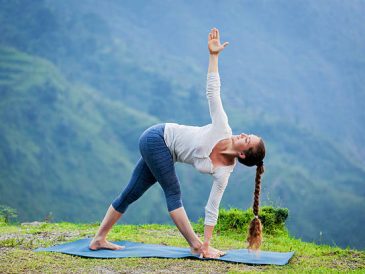Yoga, often portrayed as an ancient practice steeped in tradition, is indeed rooted in centuries of history. However, to claim that yoga is timeless would be to ignore its dynamic nature. Throughout its evolution, yoga has continuously adapted to meet the changing needs of society. In today’s fast-paced world, the essence of yoga remains intact, but its methods and applications have undergone significant transformation. This essay explores how yoga is not timeless but rather a dynamic discipline that responds to contemporary needs.
Historical Roots and Evolution
Yoga originated in ancient India, with its earliest mentions found in texts like the Rigveda, dating back over 5,000 years. Over millennia, various schools of yoga emerged, each offering distinct approaches to spiritual and physical well-being. From the meditative practices of Raja Yoga to the physical postures of Hatha Yoga, the tradition diversified and evolved.
In the late 19th and early 20th centuries, yoga experienced a revival in India, spearheaded by figures like Swami Vivekananda and Tirumalai Krishnamacharya. This revival laid the groundwork for yoga’s global spread in the 20th century. As yoga traveled to the West, it encountered new cultural contexts and underwent further transformation.
Adapting to Modern Lifestyles
The 21st century presents unique challenges to physical and mental health, driven by sedentary lifestyles, stress, and the constant bombardment of technology. In response, yoga has adapted to address these contemporary needs.
One significant development is the rise of “office yoga” or “desk yoga.” Recognizing the adverse effects of prolonged sitting on health, yoga instructors have tailored practices specifically designed for the workplace. These practices often include simple stretches, breathing exercises, and mindfulness techniques that can be performed discreetly at one’s desk. By integrating yoga into the workday, individuals can alleviate physical tension and mental stress, promoting overall well-being.
Moreover, the proliferation of online yoga platforms has democratized access to yoga instruction. People no longer need to attend studio classes; instead, they can practice yoga in the comfort of their own homes, following guided sessions streamed on their devices. This accessibility has made yoga more inclusive, reaching individuals who may have otherwise been unable to participate due to geographical, financial, or time constraints.
Yoga for Mental Health
In an era marked by rising rates of anxiety, depression, and other mental health disorders, yoga has emerged as a valuable tool for promoting emotional well-being. Research has demonstrated the efficacy of yoga in reducing stress, improving mood, and enhancing resilience.
Mindfulness-based practices, such as mindful breathing and body scan meditations, have become integral components of many yoga classes. These practices cultivate present-moment awareness, helping individuals manage negative thoughts and emotions more effectively.
Furthermore, yoga studios and wellness centers increasingly offer specialized classes tailored to specific mental health concerns, such as trauma-sensitive yoga for individuals with post-traumatic stress disorder (PTSD) or yoga for depression and anxiety. These classes combine gentle movement, breathwork, and meditation techniques to support healing and self-regulation.
Yoga Beyond Asana
While physical postures (asanas) remain a central aspect of yoga practice, contemporary yoga extends beyond the mat. The principles of yoga—such as mindfulness, compassion, and self-awareness—are applied to various domains of life, including relationships, work, and social activism.
Yoga philosophy encourages practitioners to cultivate a holistic understanding of themselves and their interconnectedness with the world around them. This awareness fosters a sense of responsibility to act with integrity and compassion, promoting social justice and environmental stewardship.
Yoga communities have also embraced diversity and inclusivity, challenging traditional stereotypes and promoting body positivity and acceptance. Inclusive language, imagery, and teaching methodologies create spaces where individuals of all backgrounds, abilities, and body types feel welcome and supported.
Conclusion
Yoga’s ability to adapt and evolve is a testament to its resilience and relevance in the modern world. While rooted in ancient tradition, yoga continues to transform to meet the evolving needs of individuals and society. From office workers seeking stress relief to individuals grappling with mental health challenges, yoga offers a versatile toolkit for holistic well-being.
As we navigate the complexities of the 21st century, yoga serves as a beacon of wisdom and compassion, guiding us toward greater self-awareness, resilience, and connection. By embracing yoga’s dynamic nature and integrating its teachings into our lives, we can cultivate a more balanced, fulfilling existence—one that honors the past while embracing the possibilities of the present and future.




